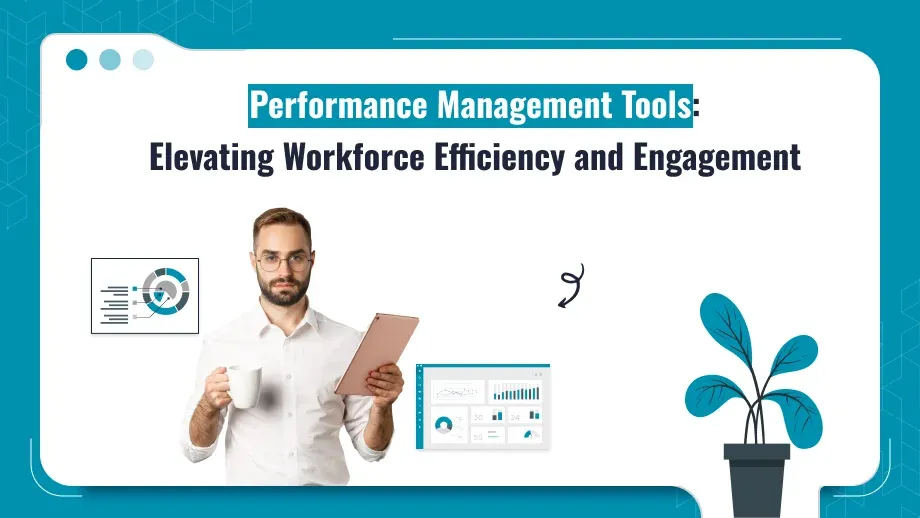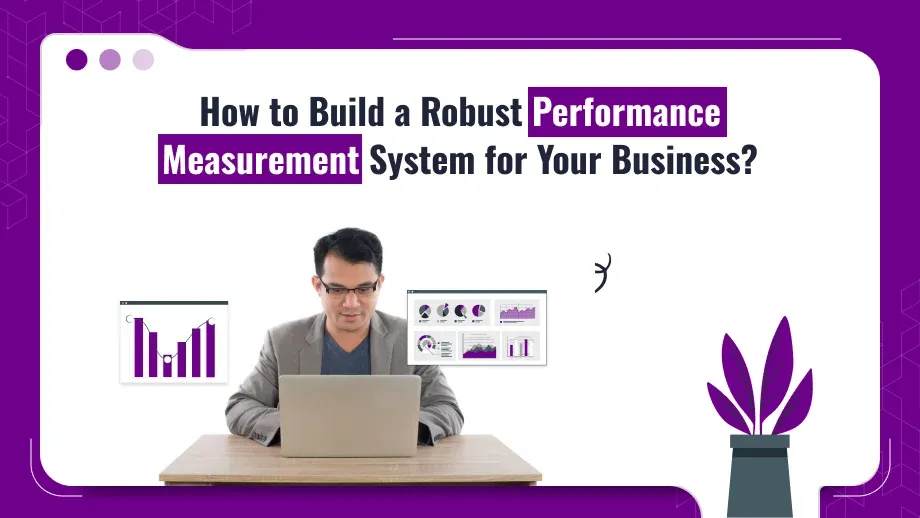
In today’s very competitive world, an organization’s capacity to control and enhance employee performance is essential. Performance management tools are indispensable to HR managers and professionals. They enable them to evaluate and improve employee performance. This blog explores the importance of tools for performance management, their features, performance management examples, challenges that organizations face in implementing these systems and the contribution they make to an thriving work culture.
What are performance management tools?
Performance management tools are intended to simplify and enhance employee performance evaluation. They give managers the tools they need to create objectives, track their progress, give immediate feedback, and carry out routine assessments.
These tools are intended to assist in the development of a better organized performance management system, which will eventually lead to corporate success by coordinating employee contributions with organizational objectives. Thanks to technology improvements, these instruments are easier to use and more effective.
What Are the Benefits of Performance Management?
1. Enhancing Employee Engagement
Employee engagement is one of the main benefits that performance management tools can provide. Employees who receive clear feedback on their goals and are regularly provided with regular feedback feel more engaged in their jobs. The engagement of employees leads to an increase in motivation, productivity and job satisfaction.
A recent study, for example, found that companies using tools such as performance management to encourage continuous feedback scored significantly higher on employee engagement than those who rely solely upon annual performance reviews. Employees who are engaged will go the extra mile to contribute to an organization’s growth.
2. Promote Accountability
These technologies encourage accountability by empowering workers to take ownership of their own objectives and output. They make performance tracking transparent so that workers may understand how their actions affect the company.
Knowing that their job will be observed increases employee motivation to finish it. An employee is more likely to recognize when they lag behind expectations and take proactive steps to improve if they utilize a performance management system to monitor their progress in comparison to predetermined KPIs.
3. Facilitating Continuous Feedback
Performance reviews are often conducted once per year. This can cause misalignment, and miss opportunities to improve. The tools of performance management allow for continuous feedback. This allows managers and staff to regularly check in and discuss their performance.
The dialogue is ongoing and helps to keep employees focused. Regular feedback cycles can improve performance and foster stronger working relationships between management and employees.
4. Aligning goals with business objectives
Tools for performance management help align employee goals with organizational objectives. Organizations can monitor employee performance by setting specific goals, measuring them and continually monitoring their progress.
If a team of marketers is focusing on increasing brand recognition, tools for performance management can be used to set goals relating to engagement in social media, reach and conversion rates, as well as lead generation. This will ensure that all members are aligned with the same goal.
5. Data-Driven decision making
The tools for performance management collect data that is valuable in guiding HR and management decision-making. The data-driven method helps organizations identify top performers, skills gaps and training requirements, so they can make better decisions regarding promotions, rewards and professional development.
If, for example, data show that one team meets their goals consistently while another struggles to do so, the management can examine why this is happening and implement targeted improvements. This could be through more training, better resource allocation or changes in process.
Elevate Your Team’s Performance with Our Innovative Management Tools!
Schedule a demo today to discover how our performance management tools can enhance productivity, engagement, and overall organizational success.
The Key Features of Performance Management Tool
Performance management tools are designed to help organizations effectively manage employee performance. They typically have several features.
1. Set goals and track your progress
Managers and employees can set clear goals that are measurable with performance management tools. The progress of these goals can be monitored over time. This provides visibility and aligns them with the organizational objectives.
A performance management system examples might allow a manager of a team to monitor the progress and set targets quarterly for every member.
2. Real-Time Feedback
The real-time functionality of feedback allows managers to give immediate feedback on employee performance. This promotes open communication, and enables employees to adjust as necessary. The immediate feedback helps to reinforce positive behavior and resolve issues before they become more serious.
If a manager sees that an employee is struggling to complete a task, then they should provide feedback immediately and offer support rather than wait for the next review.
3. Reviews of Performance and Evaluations
The use of performance management tools makes it easier for managers to consistently evaluate the performance of employees. The evaluations are customizable to reflect the specific competencies and criteria relevant to each role.
A standard evaluation procedure ensures fairness and objectivity, both of which are important for morale and employee retention. Organizations can, for example, evaluate the performance of manager based on their leadership abilities, team dynamics and goals achieved.
4. 360 Degree Feedback
A 360-degree feature is included in many performance management software tools. This allows employees to get feedback from their peers, managers, and subordinates. The holistic approach to performance ensures that the feedback given is comprehensive and balanced.
The 360-degree feedback is particularly useful for roles in leadership, when performance across different dimensions such as communication, teamwork and problem solving are evaluated.
5. Analysis and Reporting
The tools for performance management provide HR professionals with analytics and reporting features that allow them to identify trends in performance and areas of improvement. The data-driven method supports strategic decisions.
Organizations can, for example, analyze data from performance measurement tools to identify which departments or teams are performing well and those that may require additional support. This allows them to make targeted interventions.
6. Integrate with Other HR Systems
Integration of performance management software with other HR tools, like payroll, talent management and learning management systems is common. The integration of HR systems streamlines the processes, and improves data accuracy throughout the company.
Organizations can take better decisions regarding talent development and management by ensuring the data on performance is easily available and consistent.
Overcoming challenges in performance management
Even while performance management software has many advantages for businesses, putting it into practice may be difficult. These are a few of the most typical challenges along with solutions.
1. Resisting Change
Some managers and staff are reluctant to use new performance management technologies because they don’t know enough about them or because they worry about being closely examined. To solve this problem, businesses should explain the benefits of these technologies in detail and provide assistance and training to guarantee a seamless transition.
It is possible to motivate others to switch by showcasing the achievements of early adopters.
2. Information Privacy Issues
Concerns over privacy may arise among employees in relation to the gathering and utilization of data. Organizations must inform all workers about their data privacy rules in order to foster employee trust.
It’s crucial to emphasize that performance data should be used to help people grow rather than as a form of discipline.
The Best Practices to Implement Performance Management Tools
Best practices for performance management should be considered by organizations to maximize their effectiveness.
1. Define clear objectives
Prior to implementing any performance management tools, it is important that organizations define their goals. Clarity will help guide you in selecting the best tool for your organization and align it with its goals.
2. Include employees in the process
Employee participation in the choice and implementation of tools for performance management can increase acceptance and buy-in. By requesting feedback from the employees, you can ensure that the tool is meeting their needs and improving the user’s experience.
3. Train and Support Employees
Training sessions will help managers as well as employees to understand how the tools of performance management can be used effectively. It is important to provide ongoing support for any issues or questions that may arise.
4. Encourage regular check-ins
Encourage your managers to regularly check in with team members and discuss their progress. These conversations help to maintain alignment, and encourage employees to remain focused on their goal.
5. Utilize Data for Continuous Improvement
The data collected by performance management software should be analyzed regularly to determine trends, improvement areas, and professional development opportunities. This data will help companies make better decisions regarding talent development and management.
Conclusion
Tools for performance management are crucial to driving organization success and increasing employee engagement. Effectively tracking and managing the performance of an organization can help foster accountability, alignment and continual improvement.
By investing in team performance management businesses can streamline processes, develop employees, and achieve strategic goals. Performance management tools can have a transformative effect on your business.





